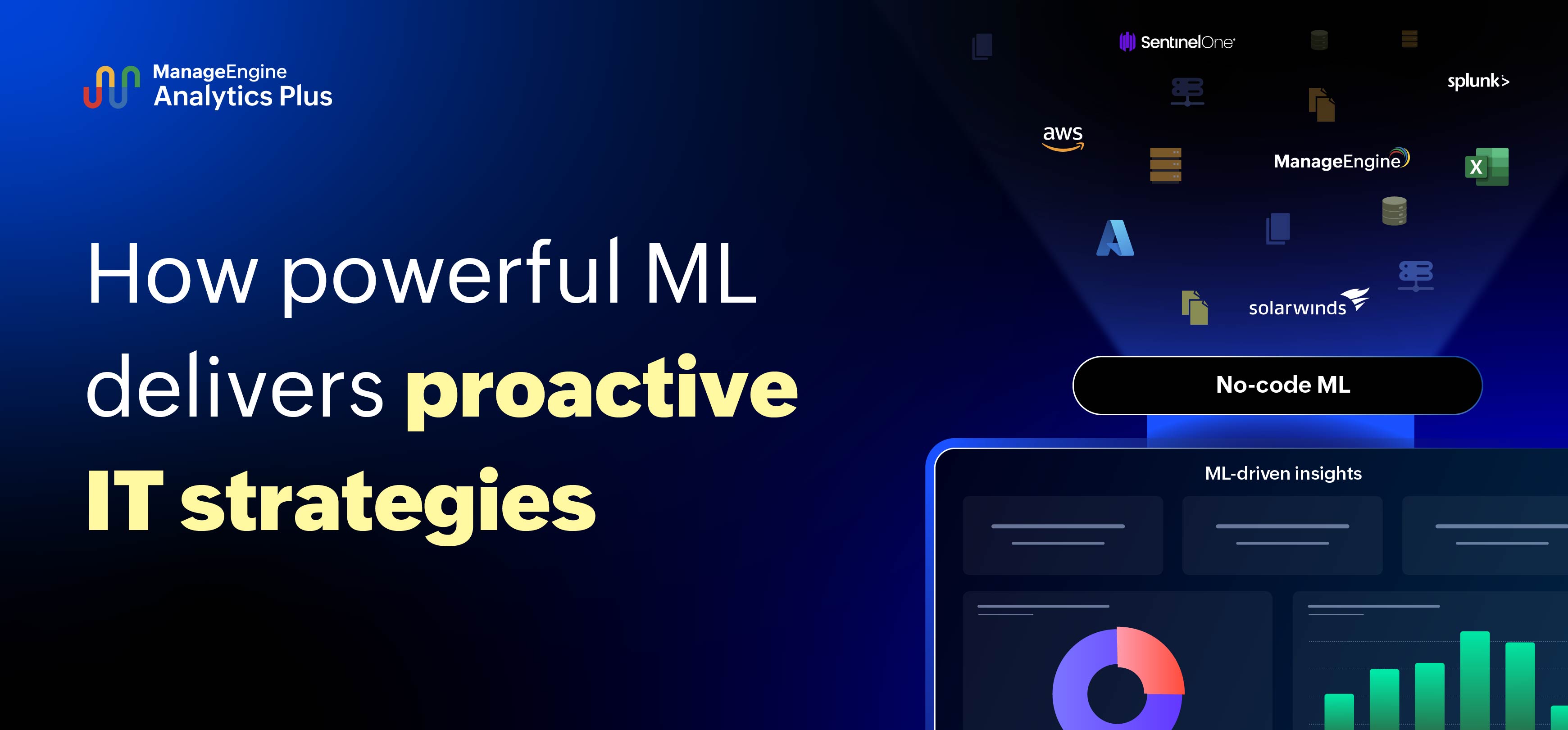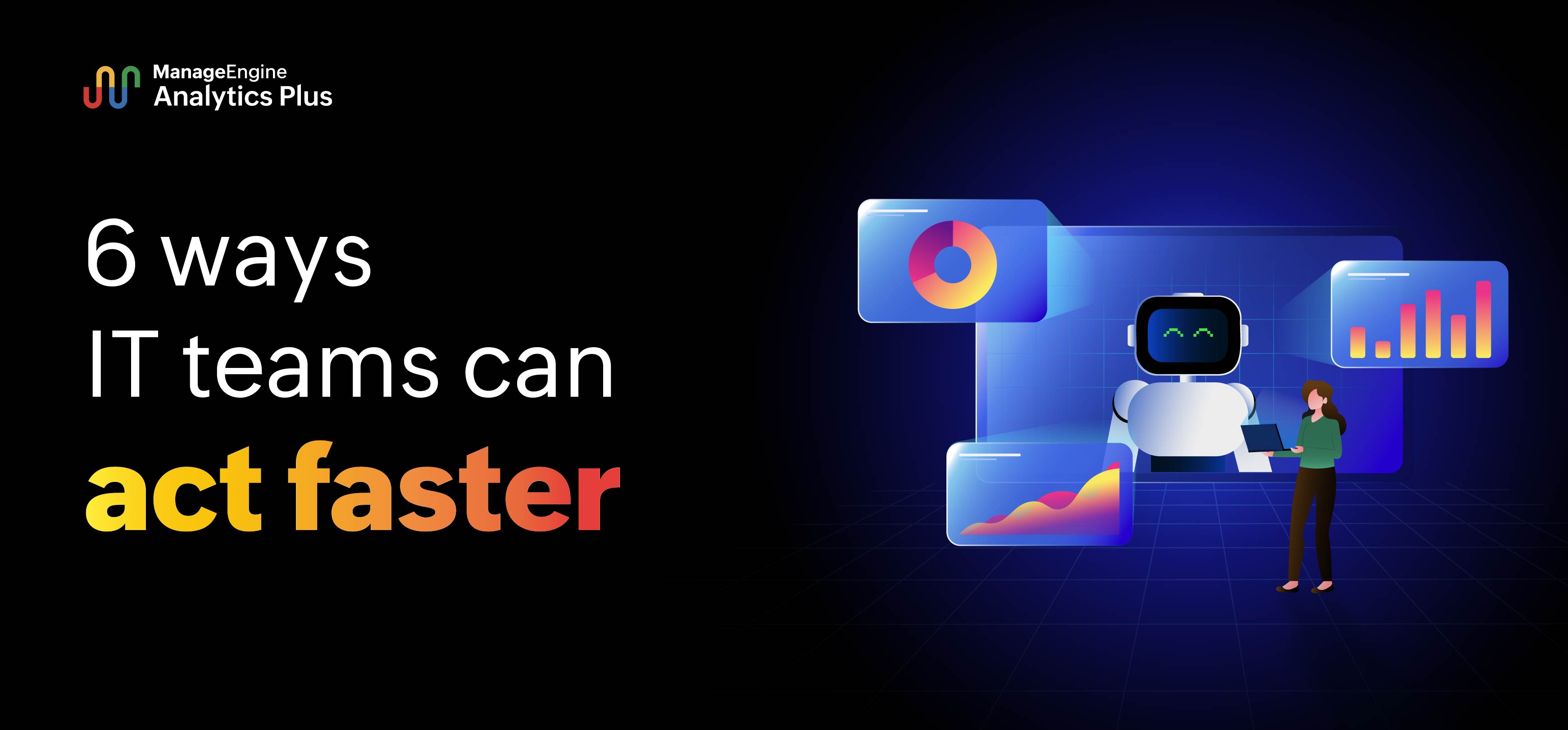- HOME
- ITSM Analytics
- Optimizing AWS cloud costs with advanced analytics
Optimizing AWS cloud costs with advanced analytics
- Last Updated: July 1, 2024
- 1.2K Views
- 6 Min Read
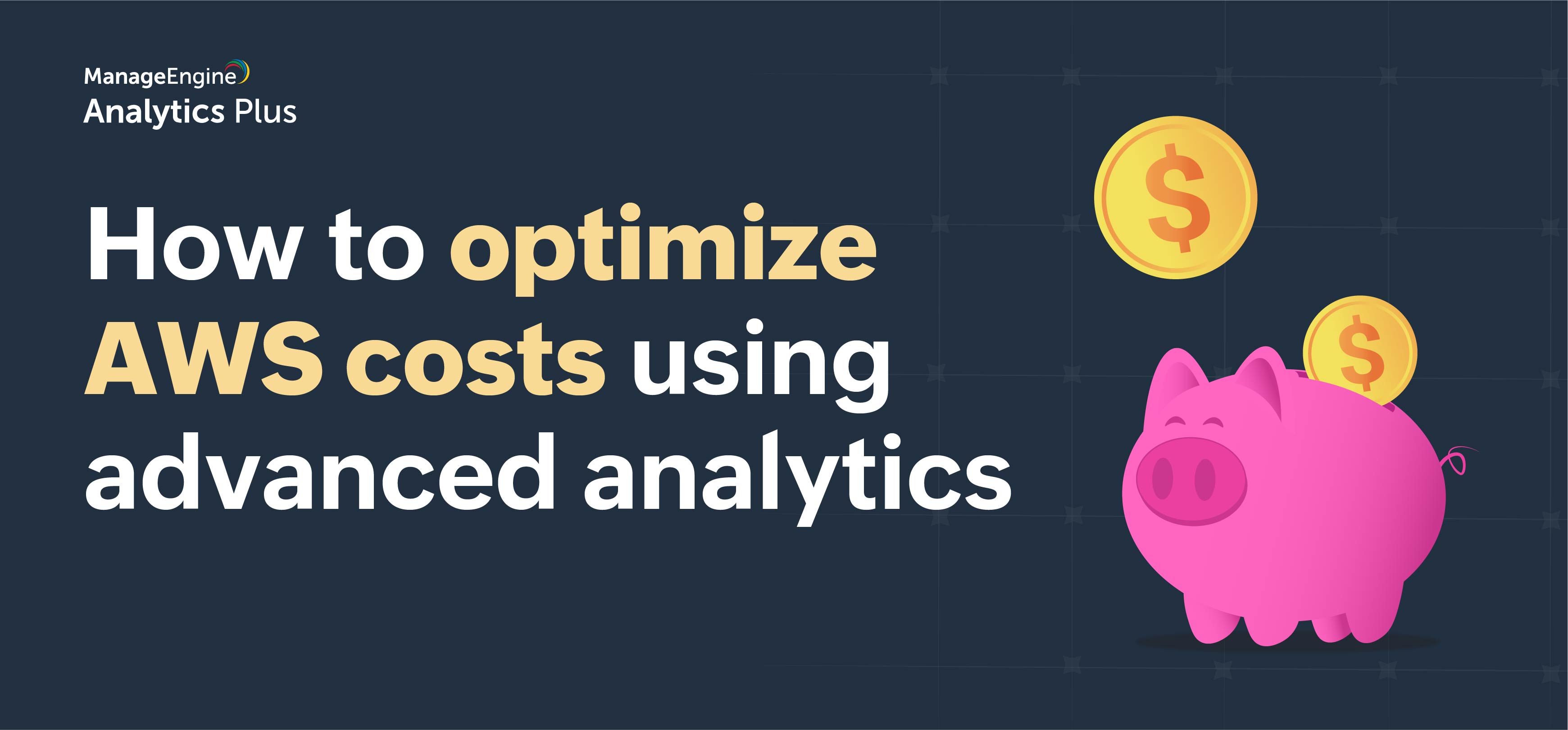
The revolution brought by cloud services has reshaped the IT environment. However, with ease of deployment comes the responsibility of managing costs. Leaving them unchecked, AWS costs can quickly skyrocket to greater heights, leaving organizations grappling with budget overruns and uncontrolled expenses.
A recent survey of 750 organizations showed that 30% of the organizations considered their cloud spending inefficient, and 80% found managing and optimizing cloud costs to be a daunting task. To tackle this challenge, IT leaders must be vigilant in monitoring and optimizing their AWS cloud costs to avoid unnecessary spending. In this blog, we will delve into why optimizing AWS cloud costs is critical, explore the challenges organizations face, and share the best practices for achieving cost optimization. Whether you're brand new to AWS or a seasoned veteran, knowing how to optimize your AWS costs can unlock the full potential of your cloud investment and fuel business growth.
What are the causes of wasteful spending in the AWS cloud?
Several reasons, including those mentioned below, could cause unnecessary spending in the AWS cloud:
Mismanaged cloud resources, such as idle, unused, or over-provisioned instances, can lead to unnecessary costs and impact cost optimization efforts.
Difficulty in accurately predicting resource requirements and spending can result in over-provisioning or under-provisioning, leading to wasted resources or performance issues.
AWS offers 200 fully featured services with a plethora of options. An inexperienced AWS technician can quickly pile up the costs by adding features to their organization that may not be necessary, which can challenge effective cost management efforts.
Why is AWS cost optimization important?
Reducing overall expenses: Optimizing cloud costs can help organizations reduce overall expenses by identifying wasteful spending and eliminating unnecessary resources.
Increasing ROI: Organizations can increase the ROI from cloud computing. They can also get more value from their cloud infrastructure and services by paying only for what they need.
Budget management: Optimizing cloud costs enables organizations to manage cloud budgets more effectively. Resources and funds can be allocated more efficiently to avoid overspending.
Scalability: Optimizing cloud costs can help organizations scale the cloud infrastructure up and down quickly and cost-effectively, ensuring they have the necessary resources to meet their demands without incurring unnecessary expenses.
Gaining a competitive advantage: By optimizing cloud costs, organizations can gain a competitive advantage. By reducing operating expenses, organizations have more money to invest in innovation and development.
4 ways to optimize cloud costs with advanced analytics:
1. Identify instances with low utilization and rightsize instances to reduce costs:
A crucial step to reducing AWS cloud costs is identifying underutilized instances and rightsizing them. However, this step is frequently overlooked by organizations when they first move to the AWS cloud. Organizations prioritize speed and performance over cost and lift and shift their environment with the expectation that they will be rightsized later, which results in oversized instances and a lot of wasted spend on underutilized instances.
The technique of aligning instance types and sizes to the workload's performance and capacity requirements while attaining the lowest cost possible is known as rightsizing. It also includes analyzing deployed instances to find areas where they can be minimized or eliminated without compromising capacity or other requirements, which lowers costs. This is possible by:
Examining CPU, memory, storage, and network latency to identify instances that can be downsized.
Eliminating resources that are underutilized or not being used at all.
Leveraging advanced analytics to identify underutilized instances in AWS by analyzing resource utilization patterns, performance metrics, and usage trends. Here's a sample report:
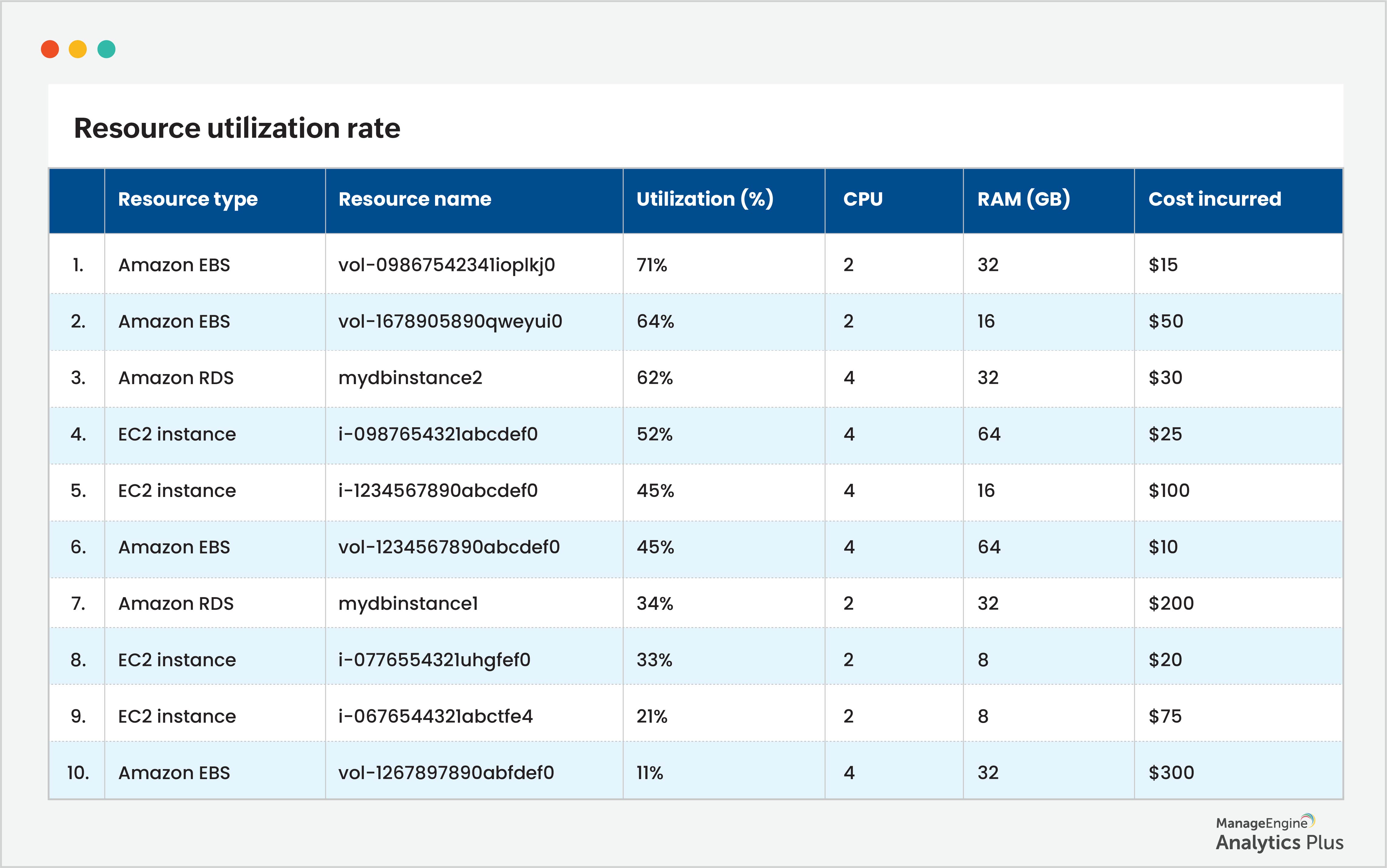
According to the report, a few resources have a utilization rate of more than 50%. This means they are utilized optimally, without heavy loads. Whereas, a few instances are utilized below 30%, meaning these instances are underutilized. The instances that are underutilized can either be downsized or eliminated as they make up a major part of the IT costs.
2. Forecasting future needs
Neglecting to forecast future needs while optimizing cloud costs can lead to a costly game of resource roulette for organizations. Under- or over-provisioning resources can lead to budget blowouts, wasted investments, and performance bottlenecks. Adopting the power of accurate forecasting enables organizations to unlock the key of cost optimization, aligning resource usage with actual demand and ensuring a blend of cost-efficiency and operational effectiveness in the cloud. It also enables organizations to provide resources accurately, optimize storage, implement effective load balancing and auto-scaling, and manage costs through budgeting and cost allocation.
To enhance the forecasting process, analytics can help organizations forecast future instance usage in AWS by analyzing historical usage patterns and identifying trends. These insights can be used to make predictions about future usage levels, which can help organizations make more informed decisions about capacity planning, instance sizing, and resource allocation. Here's a sample report:
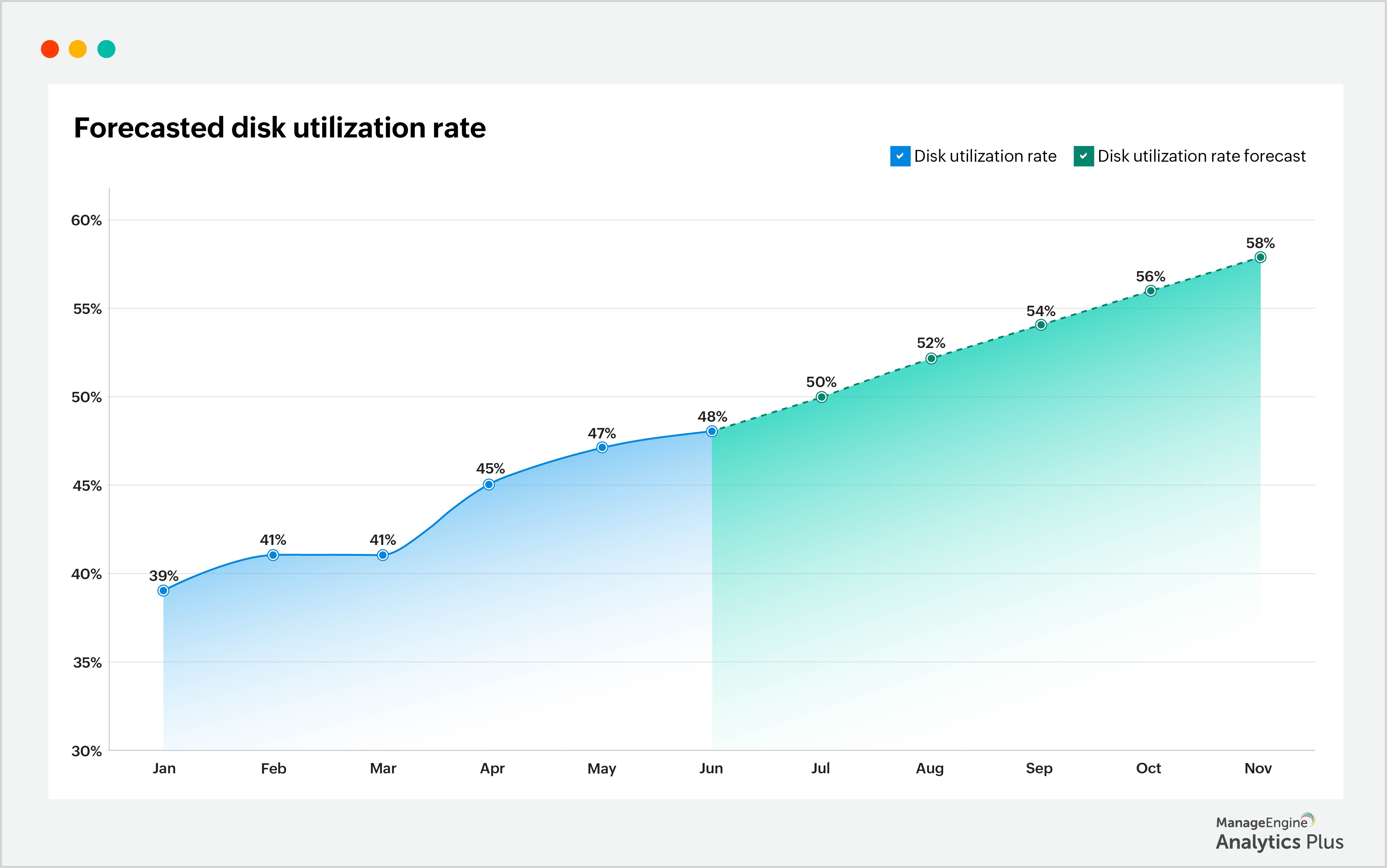
3. Scheduling on or off for non-productive instances
Scheduling on or off non-productive instances in AWS is like hitting the snooze button on unnecessary costs. By proactively powering down idle resources, organizations can attain optimized cost efficiency, boost ROI in the cloud, and reduce overall expenses. Organizations can schedule on or off times for non-production instances for developing, testing, and staging. By applying an “off” schedule during non-working hours and weekends, organizations can save up to 65% on running these instances. This practice is particularly effective for instances that are not required to be active 24/7. Here's a sample report:
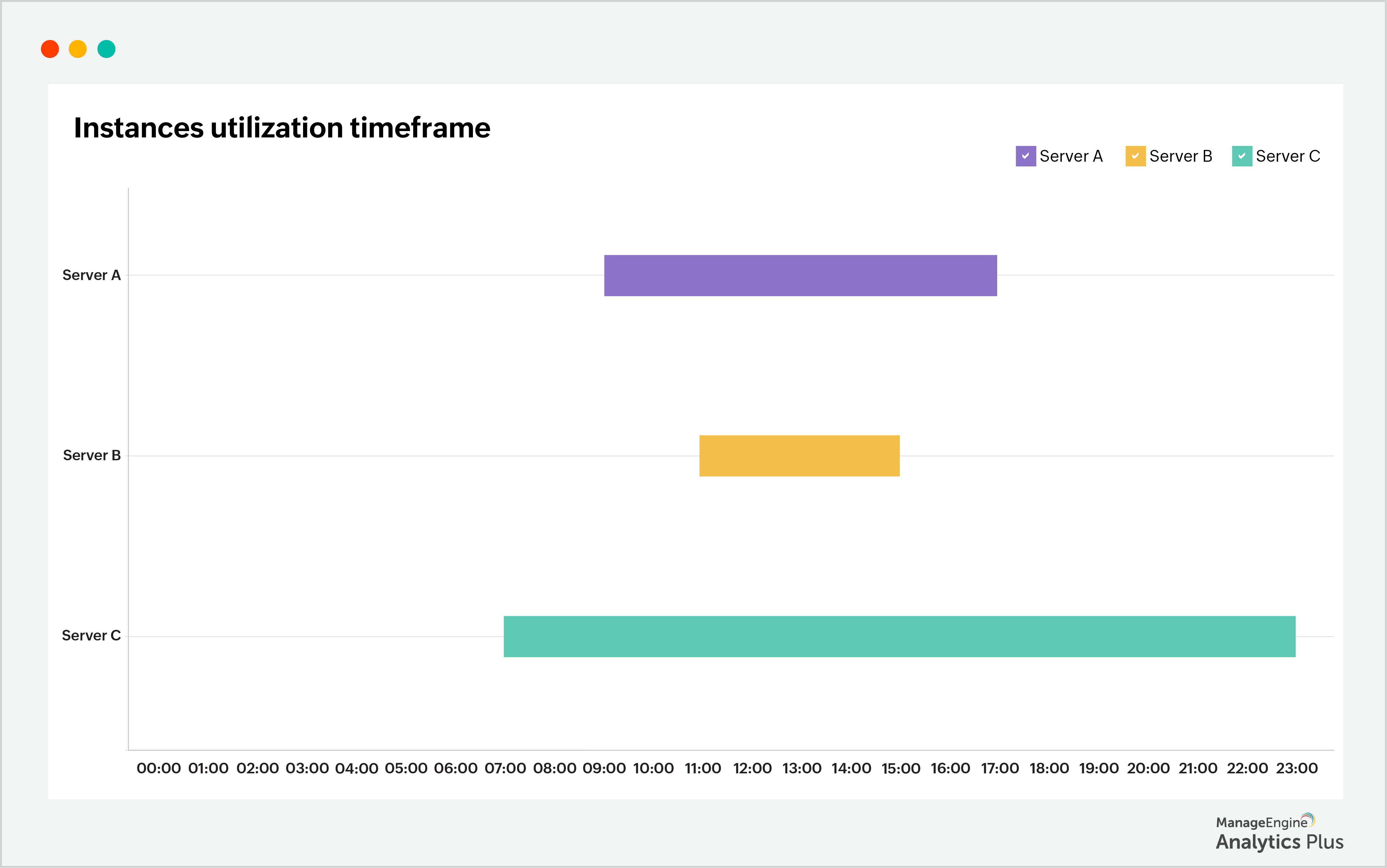
According to the report, servers A and B are used only for a limited time. Scheduling on or off on them is useful to reduce costs. Analytics can be used to spot trends and patterns in the usage of non-productive instances by analyzing historical usage patterns, performance metrics, and resource utilization data. Organizations can leverage this information to efficiently optimize costs by scheduling when to power on or off instances. Furthermore, analytics can be used to monitor the effectiveness of the scheduling approach and provide real-time recommendations for further optimization.
4. Identify unused resources
Organizations often ignore the impact of unused resources in the cloud, leading to unnecessary costs that can quickly accumulate. Instant resource provisioning has benefits, but organizations can lose track of how many resources are being fully used. Identifying and removing unused instances and storage volumes is crucial in reducing cloud wastage and optimizing costs.
Monitoring unused instances, which can significantly increase cloud spending, is a good starting point. Monitoring usage patterns can help identify instances that are no longer in use. Here's a report with the instance name and its last access date. With the information of every cloud instance utilized across the organization, instances unused for 90 days or longer can be quickly identified and eliminated without affecting capacity and other requirements.
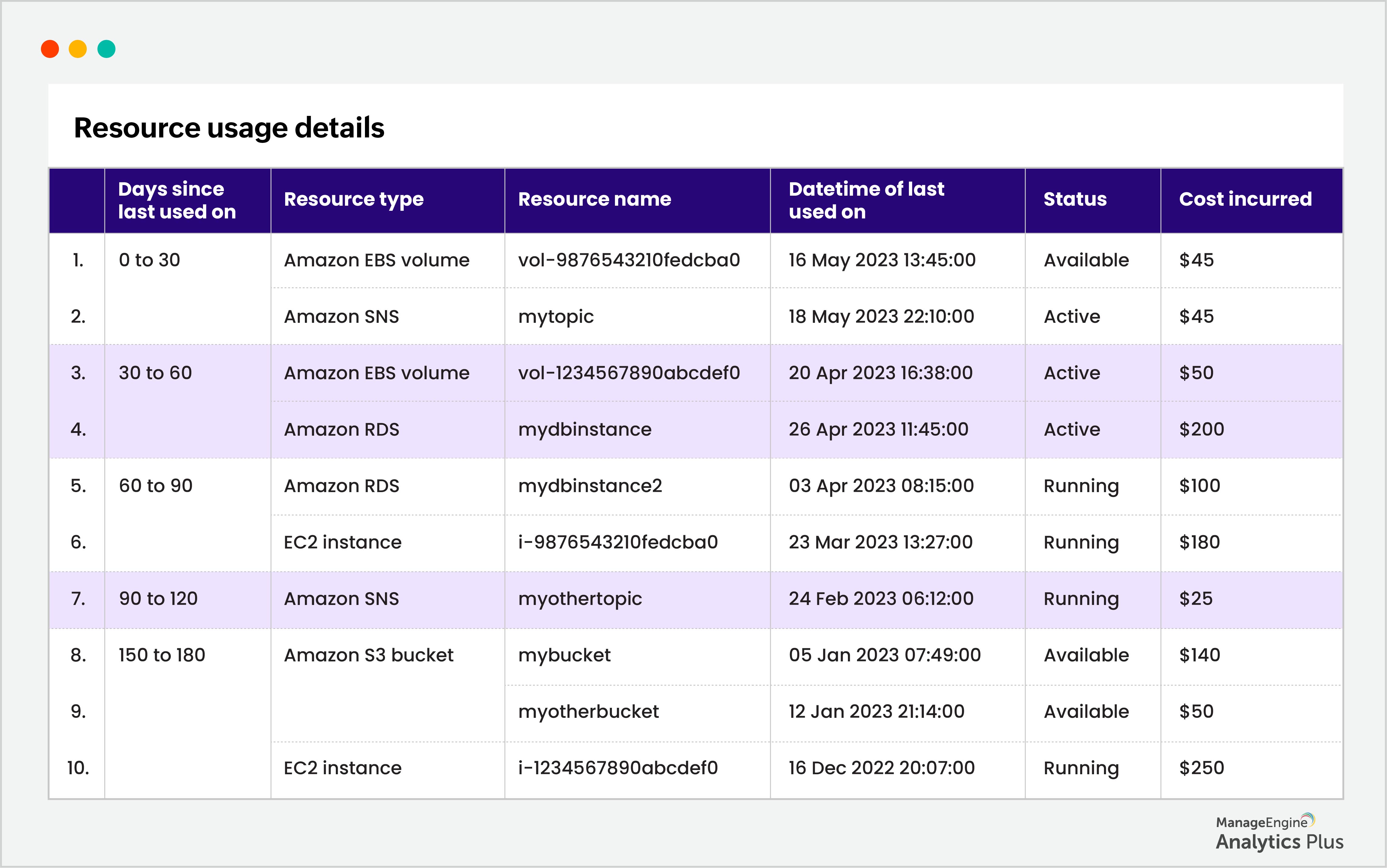
By proactively identifying and removing these unused resources, organizations can optimize their cloud costs and increase cost efficiency. Regular monitoring of unused resources can go a long way in preventing cloud wastage and ensuring cost-effective cloud operations for organizations.
Conclusion
Cloud cost optimization is not a one-time task but rather an ongoing process that requires continuous monitoring and optimization. Organizations should regularly monitor their AWS costs, analyze usage patterns, and make informed decisions to ensure they are effectively managing their cloud budgets and resources. By leveraging advanced analytics, organizations can identify instances with low utilization and rightsize them, forecast future resource needs, schedule on or off times for non-productive instances, and identify unused resources. These best practices can help organizations reduce unnecessary spending, increase cost efficiency, and optimize their cloud infrastructure and services.
The reports shown in this blog were built using Analytics Plus, ManageEngine's AI-enabled IT analytics application. Optimize your AWS costs with advanced analytics, try Analytics Plus for free.
Talk to our experts to discover all the ways you can leverage analytics to optimize your cloud costs.

